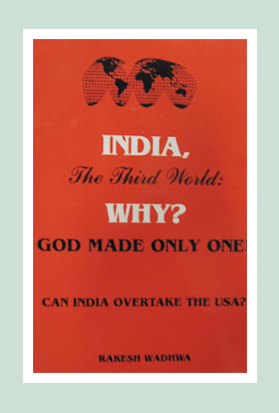Moral Hazard and the Global Financial Crisis

Competition produces efficient outcomes when certain conditions hold. One of these is that all the agents involved have all the information that they need. However, in the real world, one often observes asymmetric information; the existence of asymmetric information results in an inefficient allocation of resources.
Asymmetric information has two general effects on economic behaviour. Adverse selection occurs when the better-informed party uses the information it has before signing a contract with a less informed party. For example, the seller of a used car may sell that car at a higher than warranted price, since only he knows if the car is any good or not.
Moral hazard occurs when the better-informed agents take some hidden actions after signing a contract with the less well-informed agents. For instance, a person buys accident insurance at a good rate, on the belief of the insurance company that he is a good driver. Once the person has the insurance, he starts driving recklessly, now that the insurance company will have to bear the costs.
The Role of Moral Hazard in the Banking Sector Crisis
It was a case of moral hazard when banks signed mortgages with sub-prime borrowers, packaged them into mortgage-backed securities, and sold them to the market. The bank didn’t take on the risk of the subprime mortgages and hence, they were happy to lend away; financial institutions who bought the securitized mortgages did. In addition, the subprime borrowers were not as knowledgeable about the risk they were taking on, as compared to the bank giving them a loan.
Another case of moral hazard is the fact that systemically important banks are given an implicit guarantee that they won’t be allowed to fail. Such banks can then be as risky as they like while lending the deposits they receive; the government will pay the cost of the risk they take on.
Financial Risk Management Failed to Recognize the Risks
Financial risk management believed that risks followed a normal distribution, and could thus be predicted with ease. Portfolio diversification was a way to contain the riskiness of investing in only a few industries; if some industries did badly, the other industries in the diversified portfolio would make up for the losses. This belief fell to pieces, as problems with securitized products spread to other financial products.
Many risk modelers also ignored systemic or strategic interactions. Thus, the risks of lending to subprime borrowers are separate from the risks of investing in sovereign bonds. But then, that’s what happened; the subprime crisis spread throughout the banking sector, causing banks to bleed capital. They thought their sovereign bond portfolio would help; however, bond prices fell as the fiscal crisis intensified, when governments tried to bail out their subprime mortgage lending banks.
Regulations in the Aftermath of the Global Financial Crisis
Governments across the globe have been putting regulations in place that would hamper the ability of banks to take very high risks. The US passed the Dodd Frank Act in 2010, while the European Union had its Fiscal Compact and new regulations regarding capital requirements and a mechanism for the resolution of failed banks. One prime focus of these regulations has been to put conditions on financial bailouts. The Volcker Rule, part of the Dodd Frank Act, prohibits banks from participating in short-term proprietary trading of securities, derivatives, commodities futures and options on these instruments for their own account. Banks are further prohibited from owning or sponsoring or having a substantial stake in hedge funds and private equity funds.
Regulation don’t go into the core reason for the crisis, they merely try to alleviate the symptoms. These regulations have resulted in banks becoming even bigger – if earlier they were “too big to fail” they are even bigger now, thus compounding the moral hazard for governments as they will be compelled to sue them again and yet again…
The real solution is:
- to privatize money and get governments out of central banking
- for governments to not insure deposits with banks
- to have normal and simple laws against cheating, breach of trust, theft, etc. apply to banks, but in general governments must get out of the way and let free bankers work.
A fuller discussion of the banking crisis is beyond the scope of this short article.
 Rakesh Wadhwa. Ever since, I was a school boy, I knew India was on the wrong path. Socialism was just not what we needed to get ahead. Government controlled our travel; government controlled our ability to buy and sell; and government controlled our freedom to move our money. My life has focused on the inherent rights people have. When I was in college, I never understood, what the governments meant by their "socialistic attitude". If people are free to buy, sell and move their capital themselves without any restrictions by state, then the welfare of people is inevitable & hence the countries they live in will become wealthy. The government has no right whatsoever, to point a finger at me or my business. I am not a revolutionary. I just want to light up my cigarette and not get nagged about it. I believe in non-interfering attitude to attain more.
Rakesh Wadhwa. Ever since, I was a school boy, I knew India was on the wrong path. Socialism was just not what we needed to get ahead. Government controlled our travel; government controlled our ability to buy and sell; and government controlled our freedom to move our money. My life has focused on the inherent rights people have. When I was in college, I never understood, what the governments meant by their "socialistic attitude". If people are free to buy, sell and move their capital themselves without any restrictions by state, then the welfare of people is inevitable & hence the countries they live in will become wealthy. The government has no right whatsoever, to point a finger at me or my business. I am not a revolutionary. I just want to light up my cigarette and not get nagged about it. I believe in non-interfering attitude to attain more. 
 The Bastiat Award is a journalism award, given annually by the International Policy Network, London. Bastiat Prize entries are judged on intellectual content, the persuasiveness of the language used and the type of publication in which they appear. Rakesh Wadhwa won the 3rd prize (a cash award of $1,000 and a candlestick), in 2006.
The Bastiat Award is a journalism award, given annually by the International Policy Network, London. Bastiat Prize entries are judged on intellectual content, the persuasiveness of the language used and the type of publication in which they appear. Rakesh Wadhwa won the 3rd prize (a cash award of $1,000 and a candlestick), in 2006.
What the readers are saying…